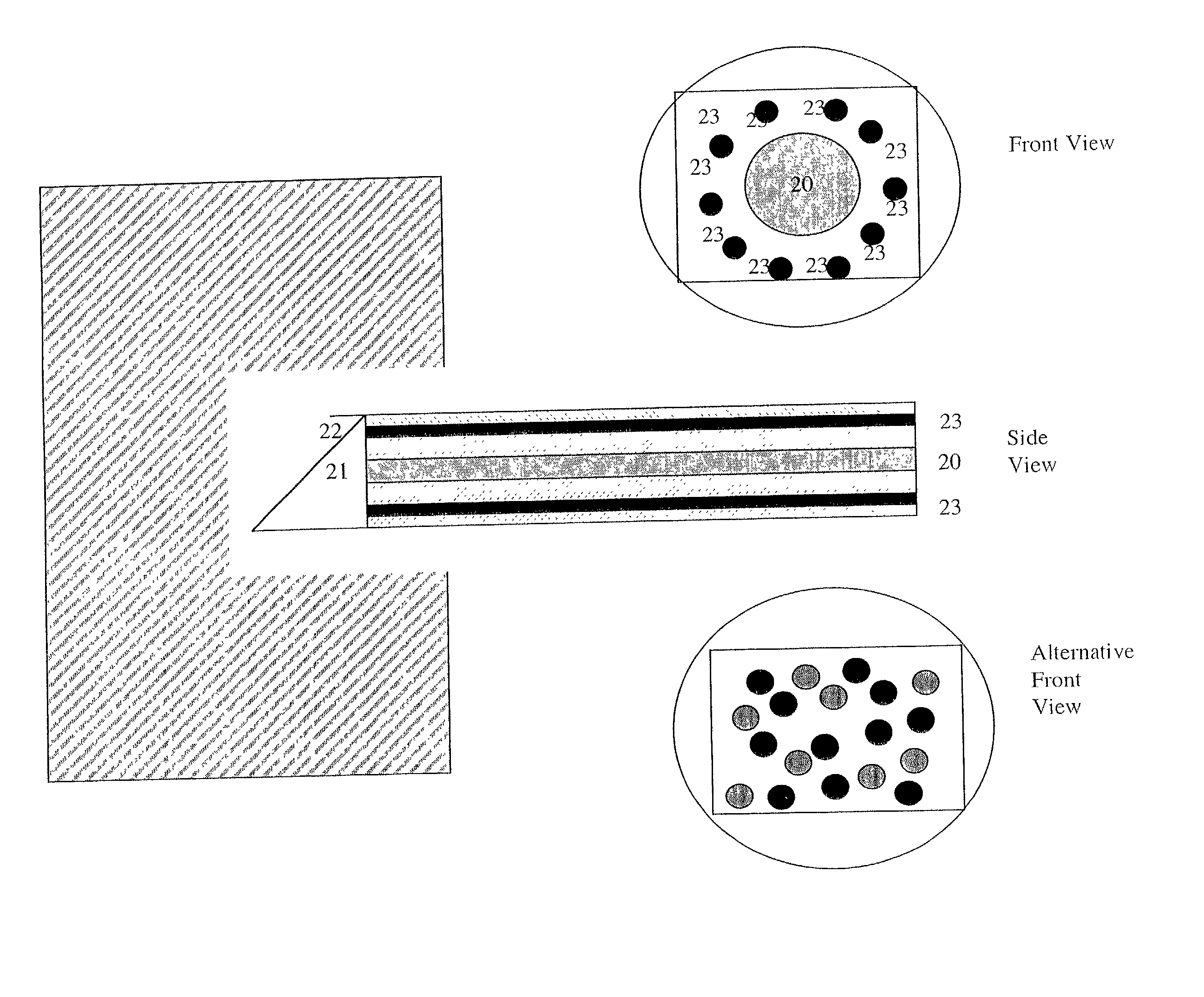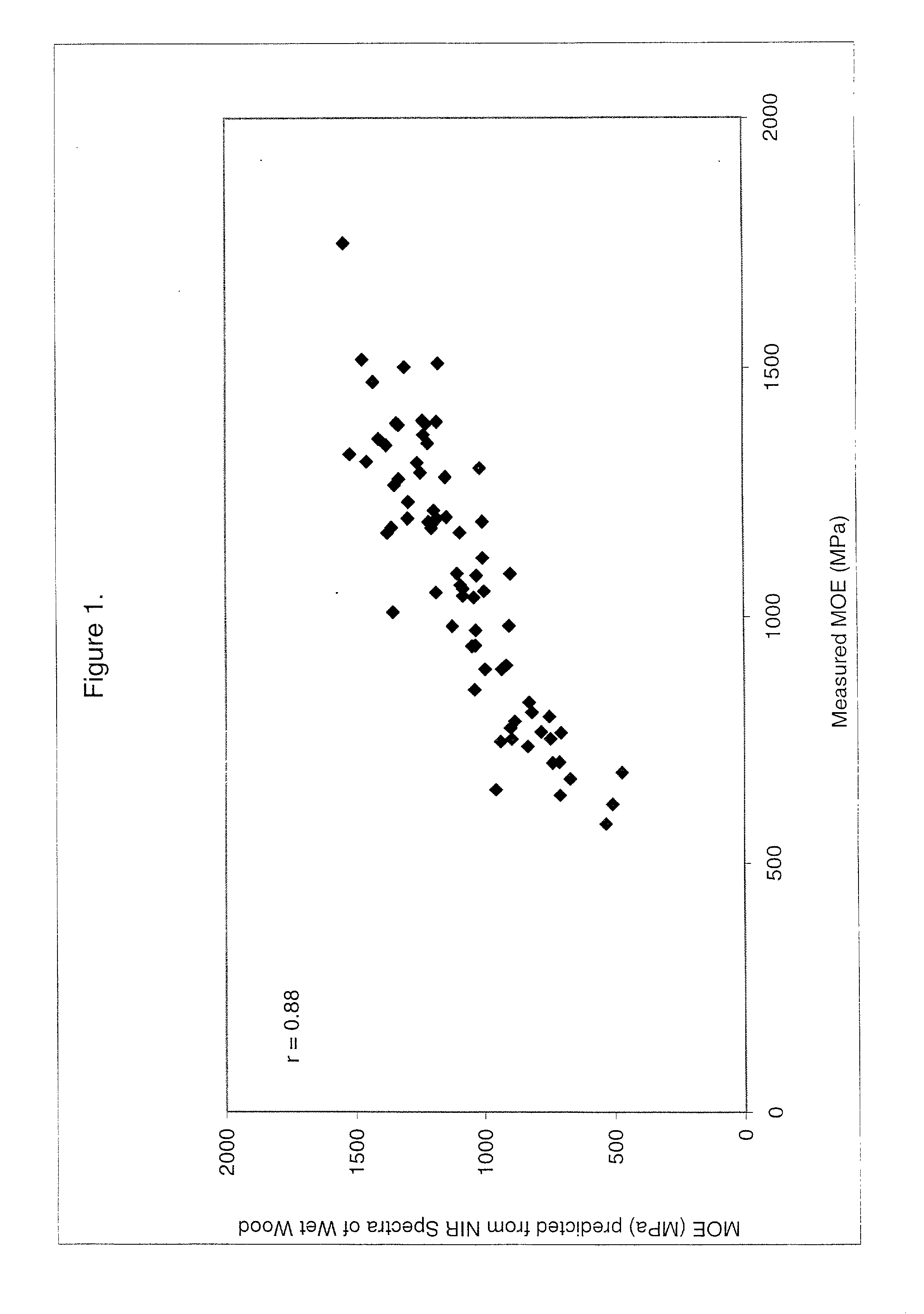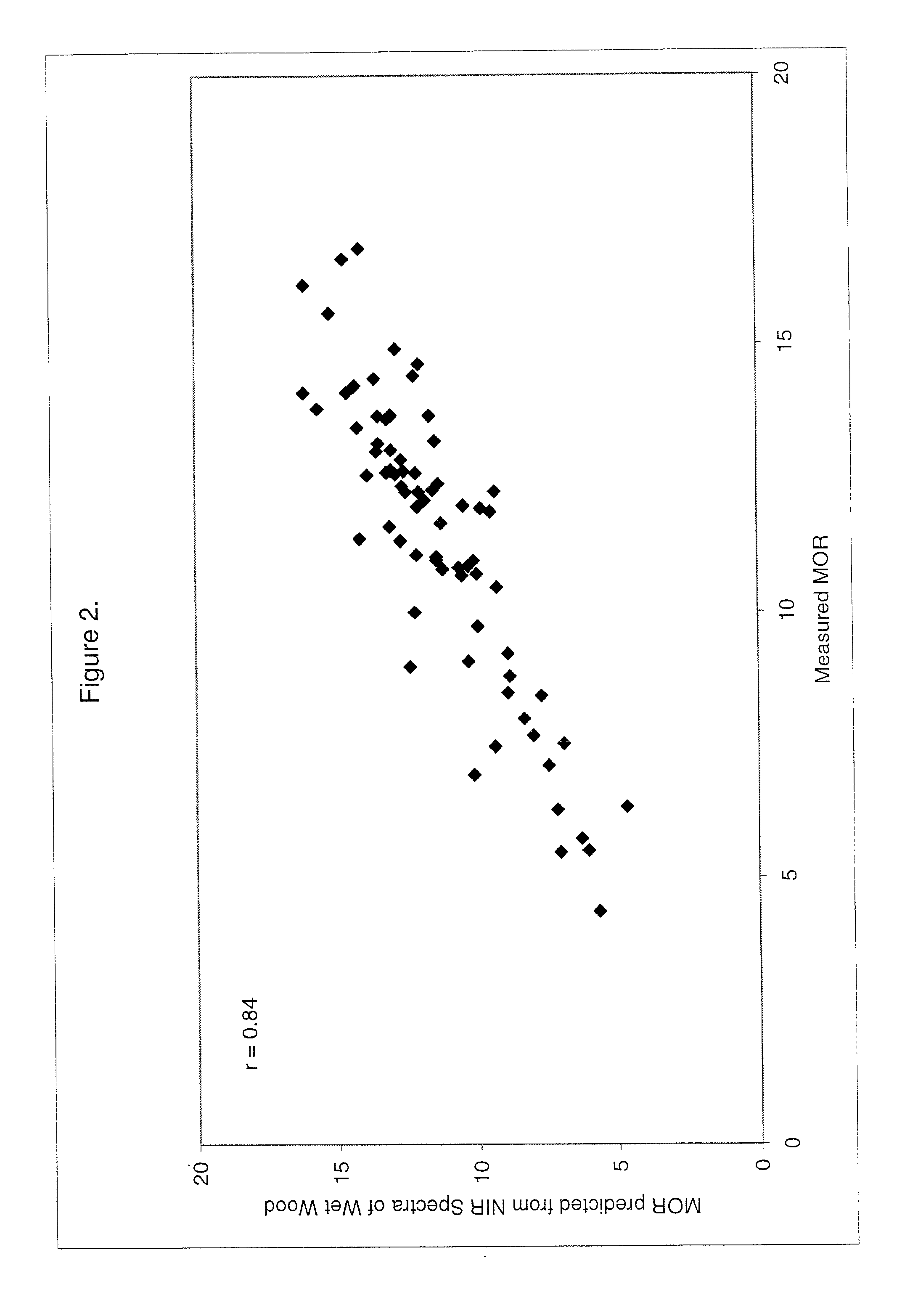Use of a region of the visible and near infrared spectrum to predict mechanical properties of wet wood and standing trees
a technology of visible and near infrared spectrum and mechanical properties, applied in the field of spectral analysis of wood, can solve the problems of difficult analysis of these properties, difficult prediction of inability to predict the dry mechanical strength of wet woody biomass,
- Summary
- Abstract
- Description
- Claims
- Application Information
AI Technical Summary
Benefits of technology
Problems solved by technology
Method used
Image
Examples
Embodiment Construction
[0077] The following examples illustrate the manner in which the method in accordance with the present invention can be made and used. Subsamples were obtained from short logs, taken from three live pine trees. Trees 1 and 3 were identified as Ponderosa Pine, and tree 2 was identified as a Lodgepole Pine. Two short logs were taken from each tree. One log was taken just above the base of the tree, at about 6-ft, and the second log was taken at about 20 ft, the location for these logs varied slightly to minimize defects within the log. Subsamples measuring between 10 and 24 inches long, 2 inches wide and one-quarter inch thick were produced and the VIS-NIR spectra were obtained on the wet samples. The subsamples were then dried and the ultimate mechanical properties, e.g., MOE and MOR, were measured on the dry samples. The absorption spectra of the wet samples and the mechanical properties of the dry samples were used to construct a multivariate calibration model that could be used to...
PUM
| Property | Measurement | Unit |
|---|---|---|
| angle | aaaaa | aaaaa |
| wavelengths | aaaaa | aaaaa |
| wavelengths | aaaaa | aaaaa |
Abstract
Description
Claims
Application Information
 Login to View More
Login to View More - R&D
- Intellectual Property
- Life Sciences
- Materials
- Tech Scout
- Unparalleled Data Quality
- Higher Quality Content
- 60% Fewer Hallucinations
Browse by: Latest US Patents, China's latest patents, Technical Efficacy Thesaurus, Application Domain, Technology Topic, Popular Technical Reports.
© 2025 PatSnap. All rights reserved.Legal|Privacy policy|Modern Slavery Act Transparency Statement|Sitemap|About US| Contact US: help@patsnap.com



